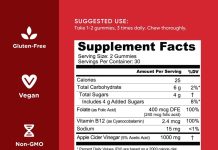We all know the struggle of sticking to a diet, especially when faced with relentless food cravings and persistent hunger pangs. It can feel like an uphill battle, but fear not, for we are here to share some valuable tips on how to effectively deal with these obstacles. So, whether you’re just starting your weight loss journey or need some new strategies to stay on track, read on to discover some practical ways to conquer those food cravings and stay satiated while dieting.
Review contents
Understanding Food Cravings
Types of Food Cravings
When it comes to food cravings, they can be categorized into two types: physiological cravings and psychological cravings. Physiological cravings are the body’s way of signaling a need for certain nutrients. For example, if we are craving chocolate, it may be because our body is in need of magnesium. Psychological cravings, on the other hand, are driven by emotions and environmental cues. These cravings often stem from a desire for comfort, stress relief, or simply the enjoyment of a particular taste or texture.
Causes of Food Cravings
Food cravings can have various causes. One common cause is restrictive dieting, where we deprive ourselves of certain foods or nutrients. This can lead to intense cravings for those forbidden items. Additionally, hormonal changes, such as those experienced during menstruation or pregnancy, can also trigger cravings. Stress, fatigue, and emotional factors can play a role as well, as we often turn to food for comfort or as a coping mechanism. Lastly, habit and conditioning can also contribute to food cravings, as we may have become accustomed to certain foods or eating patterns.
Tips to Manage Food Cravings
Managing food cravings can be challenging, but there are strategies that can help. One effective tip is to identify the underlying cause of the craving. If it is a physiological craving, we can try to address the nutrient deficiency by choosing healthier options that provide the needed nutrients. For psychological cravings, finding alternative activities that provide comfort or stress relief, such as exercise or meditation, can be beneficial. Another helpful tip is to practice mindful eating, paying attention to the taste and texture of the food we consume. Additionally, keeping a food journal and planning meals in advance can help us make conscious choices and reduce impulsive cravings.
Controlling Hunger Pangs
Understanding Hunger Pangs
Hunger pangs, also known as hunger pains, are the uncomfortable sensations we feel in our stomach when it is empty and in need of nourishment. These pangs are the body’s way of signaling that it needs fuel to function properly. Often accompanied by growling noises, hunger pangs can sometimes be intense and distracting, making it difficult to focus on other tasks.
Tips to Curb Hunger Pangs
While it is natural to experience hunger pangs, there are ways to manage them and prevent overeating. One effective tip is to eat regular meals and snacks throughout the day to keep hunger at bay. Skipping meals can lead to overcompensating and consuming larger portions later on. Additionally, choosing foods that are high in volume but low in calories, such as fruits and vegetables, can help us feel fuller for longer periods. It is also important to stay hydrated, as thirst can often be mistaken for hunger. Drinking water or herbal tea can help alleviate hunger pangs. Lastly, practicing mindful eating can help us recognize the signs of true hunger and distinguish them from cravings or emotional triggers.
Choosing Satiating Foods
When it comes to controlling hunger, selecting satiating foods is key. These are foods that keep us feeling full and satisfied for longer periods. One strategy is to incorporate foods that are high in fiber, such as whole grains, legumes, and vegetables. Fiber takes longer to digest, helping us stay fuller for longer. Another important nutrient is protein, which can also promote satiety. Including lean sources of protein, such as chicken, fish, tofu, or Greek yogurt, in our meals can help control hunger. Lastly, healthy fats, found in avocados, nuts, and seeds, can provide a feeling of fullness and satisfaction. By incorporating these satiating foods into our meals, we can effectively manage hunger pangs.
Managing Emotional Eating
Identifying Emotional Eating Triggers
Emotional eating is a common phenomenon where we turn to food as a way to cope with emotions, rather than for nourishment. It often involves consuming large quantities of unhealthy, high-calorie foods during times of stress, sadness, or boredom. Identifying the triggers that lead to emotional eating is an important step in managing this behavior. Some common triggers include stress, loneliness, fatigue, and certain situations or environments that are associated with specific emotional responses.
Tips to Overcome Emotional Eating
Overcoming emotional eating requires developing alternative coping mechanisms and strategies. One tip is to find healthy outlets for our emotions, such as exercising, journaling, or talking to a trusted friend or family member. Engaging in activities we enjoy, such as hobbies or creative pursuits, can also help distract us from turning to food for comfort. It is important to create a supportive environment by having nourishing and healthy food options readily available. Practicing stress management techniques, such as deep breathing or meditation, can also be beneficial in reducing emotional eating. Lastly, seeking professional help, such as therapy or counseling, can provide valuable support and guidance in overcoming emotional eating patterns.
Seeking Professional Help
In some cases, emotional eating may become a chronic issue that requires professional intervention. Registered dietitians or nutritionists can offer personalized guidance and meal plans to help address emotional eating. They can provide strategies to manage cravings and hunger, as well as assist in creating a balanced and satisfying diet. Mental health professionals, such as therapists or counselors, can also be valuable resources, as they can help us understand the underlying emotional triggers and develop healthy coping mechanisms. Seeking professional help is a proactive step towards long-term success in managing emotional eating.
Creating a Balanced Diet
Consuming Adequate Macros
Having a balanced diet means ensuring that we consume an appropriate balance of macronutrients – carbohydrates, proteins, and fats. Each macronutrient plays a crucial role in our body’s functioning and overall health. Carbohydrates provide energy, proteins support muscle growth and repair, and fats help with hormone production and nutrient absorption. A well-rounded diet should include a good mix of these macronutrients to optimize our overall health and well-being.
Incorporating Fiber and Protein
In addition to the macronutrients, it is important to focus on specific nutrients that promote satiety and overall health. Fiber and protein are two crucial components of a balanced diet. Fiber helps regulate digestion, promotes feelings of fullness, and aids in maintaining healthy blood sugar levels. Including fiber-rich foods such as whole grains, fruits, vegetables, and legumes can help us achieve our daily intake goals. Protein, on the other hand, is essential for muscle growth and repair, along with providing a feeling of satiety. Good sources of protein include lean meats, poultry, fish, dairy products, tofu, and plant-based proteins like beans or quinoa.
Optimizing Meal Timing
In addition to the content of our diet, the timing of our meals can also impact our overall nutrition and sense of satiety. It is important to establish regular eating patterns and avoid skipping meals or going for long periods without eating. This can help regulate our metabolism and prevent excessive hunger, which can lead to overeating or making unhealthy food choices. Aim for three balanced meals a day, with healthy snacks in between if needed, to maintain a steady energy level and prevent cravings.
Meal Planning and Portion Control
Benefits of Meal Planning
Meal planning is a proactive approach to managing our diet and ensuring we make healthy choices. By planning our meals in advance, we can avoid impulsive and unhealthy food choices that often occur when we are hungry or faced with limited options. Meal planning also helps us maintain portion control, as we can measure and prepare appropriate serving sizes ahead of time. Additionally, it can save time and money by reducing the need for last-minute takeout or dining out.
Tips for Portion Control
Portion control is a vital aspect of maintaining a balanced diet. It involves consuming appropriate amounts of food to meet our nutritional needs without overeating. One tip for portion control is to use smaller plates and bowls to create the illusion of a fuller plate. Additionally, measuring cups and food scales can help us accurately portion our meals and prevent excessive calorie consumption. Learning to listen to our body’s hunger and fullness cues is also important, as it can help us gauge when to stop eating. Lastly, avoiding distractions while eating, such as watching TV or working, can help us focus on our meal and be more mindful of portion sizes.
Healthy Snacking Ideas
Snacking can be an opportunity to include additional nutrients and provide an energy boost between meals. Healthy snacking options should combine a balance of macronutrients and be satisfying, while avoiding excessive calories or added sugars. Some healthy snacking ideas include sliced fruits and vegetables with hummus or Greek yogurt dip, a handful of nuts or seeds, a small portion of whole-grain crackers with low-fat cheese, or a homemade trail mix with dried fruits and unsalted nuts. It is important to plan and prepare these snacks in advance to avoid reaching for less healthy options when hunger strikes.
Finding Alternative Snacks
Healthy Snacks to Satisfy Cravings
When cravings strike, it can be tempting to reach for unhealthy snacks packed with added sugars and processed ingredients. However, there are plenty of healthier alternatives that can satisfy our cravings while still contributing to our overall well-being. For a sweet tooth, fresh fruit or a small portion of dark chocolate can provide the desired sweetness. Craving salty snacks? Opt for air-popped popcorn, roasted chickpeas, or kale chips. For a crunchy texture, sliced vegetables with hummus or baked whole-grain tortilla chips with salsa can be great options. By choosing healthier alternatives, we can still enjoy our favorite flavors without compromising our health goals.
Substituting Unhealthy Snacks
While finding alternative snacks is important, it can also be helpful to identify and substitute unhealthy snacks in our existing diet. Recognizing our go-to indulgences and finding healthier replacements can support our dietary goals. For example, if we often reach for a bag of chips, we can try baking or air frying homemade veggie chips instead. If ice cream is our weakness, we can experiment with frozen yogurt or blending frozen bananas for a creamy, natural alternative. The key is to find healthier versions of our favorite snacks that still provide the desired taste, texture, and satisfaction.
Moderation is Key
While finding alternative snacks and substituting unhealthy options are beneficial strategies, it is important to remember that moderation is key. Depriving ourselves completely of the foods we crave can lead to feelings of restriction and potential binge eating episodes. Rather than completely eliminating our favorite treats, practicing moderation and portion control allows us to enjoy them in a balanced way. By savoring the flavors and being mindful of our portion sizes, we can strike a healthy balance between satisfying our cravings and maintaining a nutritious diet.
Staying Hydrated
Importance of Hydration
Staying hydrated is essential for our overall health and well-being. Water is vital for maintaining proper bodily functions, including regulating body temperature, lubricating joints, and flushing out toxins. Adequate hydration also supports digestion, nutrient absorption, and can contribute to healthy skin. It is important to note that thirst is not always an accurate indicator of hydration, so it is essential to drink enough fluids throughout the day.
Drinking Water vs. Other Beverages
While there are various beverages available to quench our thirst, water remains the best choice for hydration. It is calorie-free, sugar-free, and readily accessible. Soda, sugary drinks, and even fruit juices can be high in added sugars and calories, which can contribute to weight gain and other health issues. To add flavor to water, one can infuse it with slices of citrus fruits, berries, or herbs like mint or basil. Herbal teas and unsweetened, natural fruit teas can also be hydrating options without the added sugars and calories.
Tips to Increase Water Intake
For those who struggle to drink enough water, there are tips and tricks to increase water intake throughout the day. One strategy is to carry a reusable water bottle and sip on it regularly, aiming to finish a certain amount by specific times of the day. Setting reminders on our phone or incorporating water-drinking breaks into our daily routine can also be helpful. Additionally, incorporating water-rich foods into our meals, such as soups, stews, and juicy fruits like watermelon or oranges, can contribute to our overall hydration. Lastly, flavored sparkling water or unsweetened herbal teas can be refreshing alternatives for those who crave more variety.
Practicing Mindful Eating
Benefits of Mindful Eating
Mindful eating is a practice that involves paying attention to the present moment and our eating experience without judgment or distraction. By practicing mindful eating, we can foster a healthier relationship with food and develop a greater understanding of our body’s hunger and fullness cues. Mindful eating has been linked to reduced overeating, improved digestion, and a greater appreciation for the flavors and textures of food. It can also promote a sense of calm and overall well-being.
Tips to Eat Mindfully
To incorporate mindful eating into our daily lives, there are several tips to consider. One essential tip is to eat slowly and savor each bite. Take the time to chew thoroughly and pay attention to the taste, texture, and aroma of the food. Minimize distractions, such as electronic devices or television, and focus solely on the meal. Mindful eating also involves tuning into our body’s hunger and fullness cues, eating when we are hungry, and stopping when we are comfortably satisfied. Keeping a food journal and reflecting on our eating habits and emotions can also enhance our mindful eating practice.
Using Techniques to Slow Down
In a fast-paced world, it can be challenging to slow down and practice mindful eating. However, incorporating simple techniques can help us develop this beneficial habit. One technique is to put down our utensils between bites, allowing ourselves to pause and fully experience the flavors of our food. Engaging in mindful breathing exercises, taking deep breaths before and during meals, can also help us stay present and focused. Additionally, incorporating gratitude before meals, acknowledging the effort and ingredients that went into our food, can help us cultivate a deeper connection to the eating experience. By implementing these techniques, we can gradually introduce mindful eating into our daily routine.
Importance of Sleep and Stress Management
Effects of Sleep Deprivation
Sleep deprivation can have a significant impact on our overall health and well-being, including our dietary choices. Lack of sleep has been associated with an increased risk of weight gain and obesity, as it affects our hunger and fullness hormones, leading to increased appetite and a preference for high-calorie foods. Poor sleep quality can also impair our decision-making abilities, making it more challenging to make healthy food choices and resist cravings. Furthermore, sleep deprivation can contribute to increased stress levels, further exacerbating emotional eating tendencies.
Managing Stress Levels
Stress management is crucial for maintaining a healthy relationship with food and preventing emotional eating. Chronic stress can trigger cortisol, a stress hormone that can increase appetite and lead to cravings for high-calorie foods. Engaging in stress-reducing activities, such as exercise, meditation, or hobbies, can help regulate cortisol levels and promote a sense of calm. Prioritizing self-care and setting aside time for activities that bring us joy and relaxation is essential in managing stress and preventing emotional eating.
Prioritizing Self-Care
Self-care plays a vital role in maintaining overall well-being and supporting our dietary goals. It involves taking care of our physical, mental, and emotional needs on a regular basis. Prioritizing self-care can include activities such as getting enough sleep, engaging in regular exercise, spending time with loved ones, practicing relaxation techniques, or enjoying hobbies and interests. By investing in self-care, we can reduce stress, improve our mood, and create a positive environment that supports healthy choices and emotional well-being.
Seeking Support and Accountability
Enlisting Supportive Friends or Family
Seeking support from friends and family is invaluable when it comes to managing our diet and achieving our health goals. Sharing our journey with loved ones can provide a sense of accountability and encouragement. Family and friends can offer emotional support, helping us stay motivated and navigate challenging situations. They can also join us in adopting healthier habits, making it easier to stick to our goals. By enlisting the support of those around us, we create a sense of community and increase the likelihood of long-term success.
Joining a Community or Group
Joining a community or group with similar health and wellness goals can provide additional support and motivation. Online communities, social media groups, or local meetups can connect us with like-minded individuals striving for a healthier lifestyle. These communities often offer a space for sharing experiences, seeking advice, and celebrating milestones. Being part of a supportive group can foster a sense of accountability, as well as provide valuable insights and resources to enhance our wellness journey.
Hiring a Dietitian or Nutritionist
For personalized guidance and expertise, enlisting the help of a registered dietitian or nutritionist can be highly beneficial. These professionals have a deep understanding of nutrition and can provide tailored meal plans, education on balanced eating, and tools for managing cravings and emotional eating. Working with a dietitian or nutritionist allows us to develop a customized approach to our dietary needs and goals. They can also provide ongoing support, monitoring progress, and making adjustments as needed. Hiring a professional ensures that we receive evidence-based guidance and the best possible chance for long-term success.
In conclusion, understanding and managing food cravings, hunger pangs, emotional eating, and creating a balanced diet are essential elements for a healthy and sustainable approach to nutrition. By incorporating strategies such as identifying triggers, practicing mindful eating, seeking professional help when needed, and enlisting support from loved ones or communities, we can navigate the challenges and achieve our dietary goals. With a mindful and balanced approach, we can develop a positive relationship with food, enhance our overall well-being, and thrive on our journey towards optimal health.



























